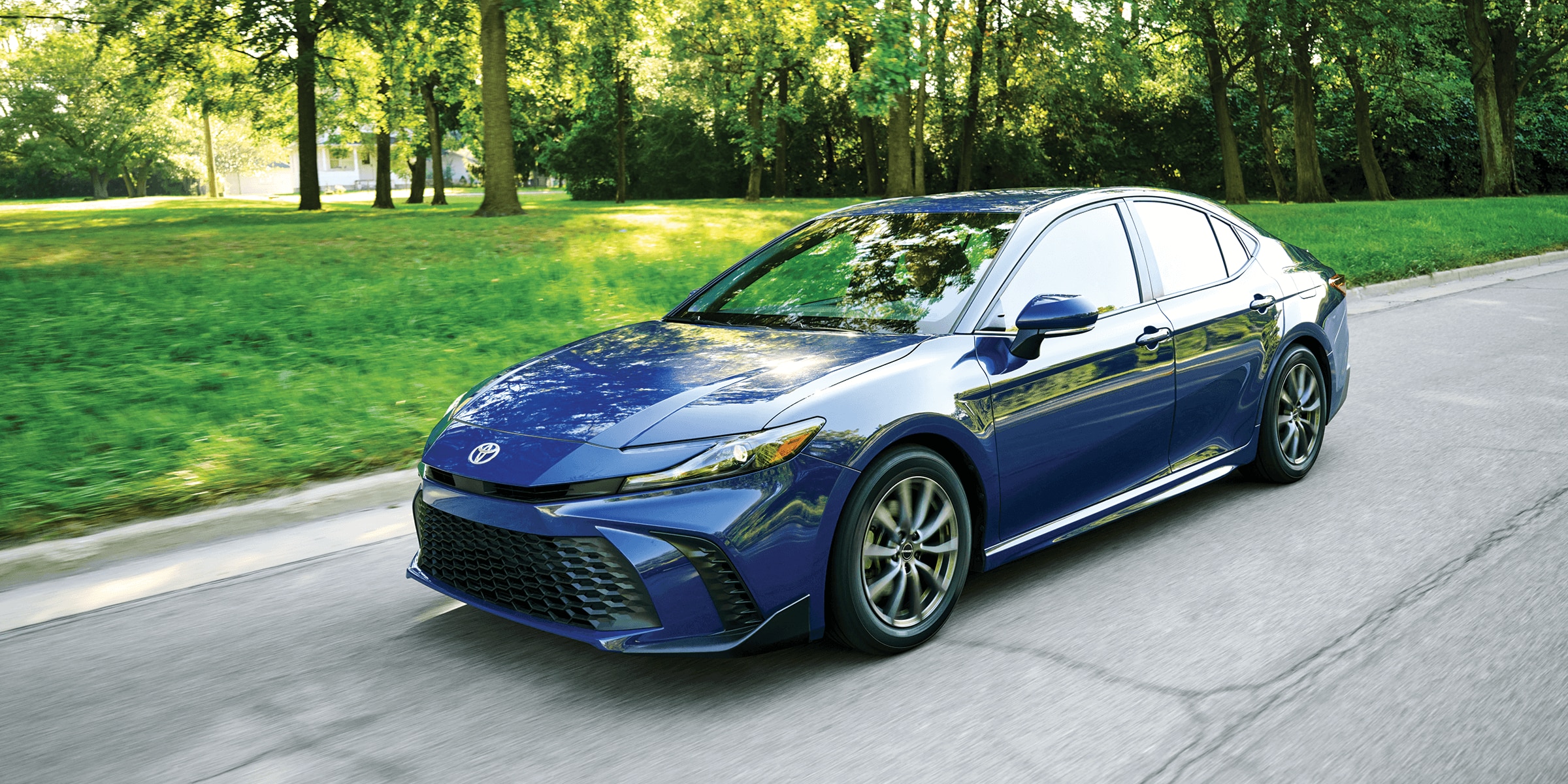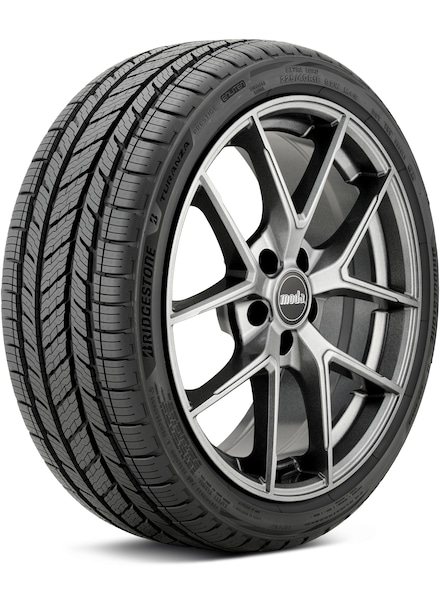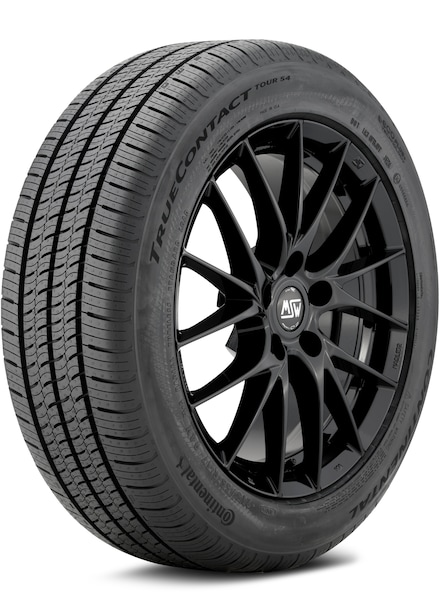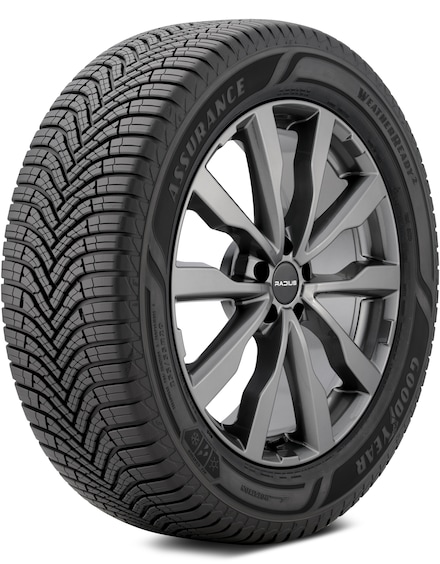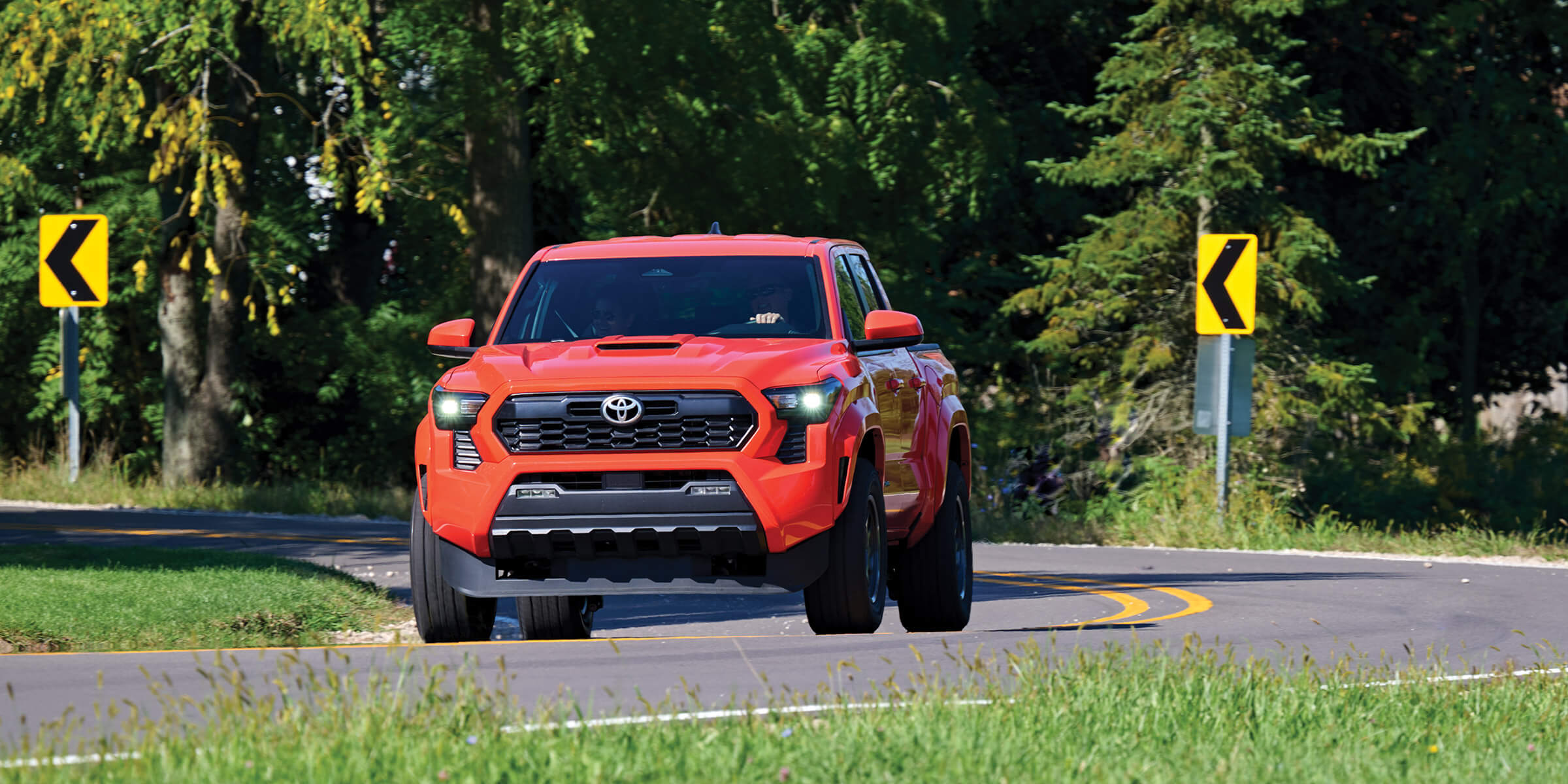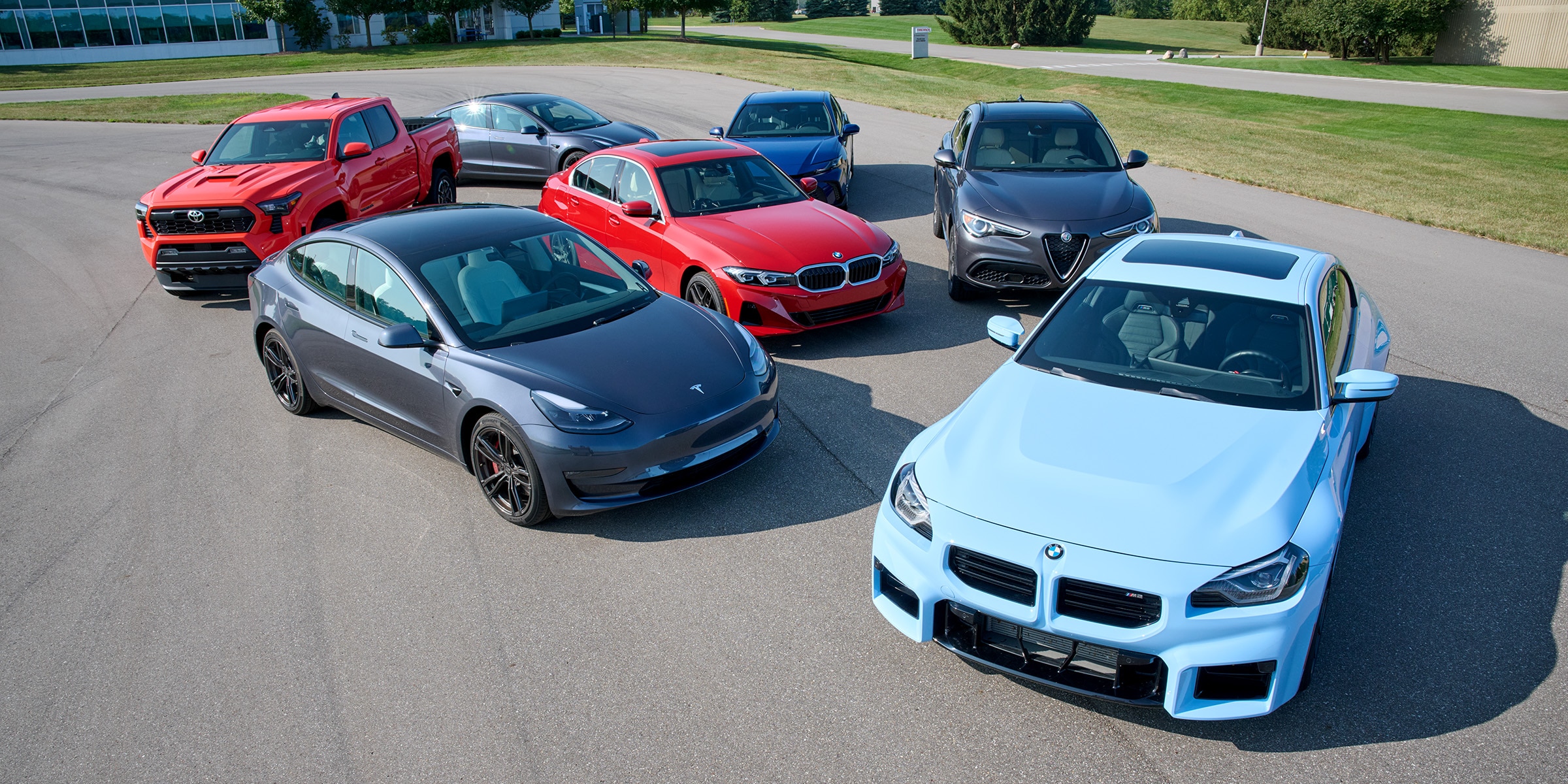Test Result Video
Premium Touring Tires: Elevating the Journey – 2025 Test 7
Length: (24:17)
Tires Tested
-
-
What We Liked
A pleasant on-road drive, with lively steering.
-
What We'd Improve
It would be nice to see traction more closely mated to steering response.
-
Summary
It's markedly unremarkable. Few weaknesses, but few stand-out characteristics.
-
-
What We Liked
Nicely weighted handling both in the wet and on-road.
-
What We'd Improve
Slight adjustments to improve comfort and noise control would be great.
-
Summary
Capable everyday performance, held back a bit by its edgy character during the lane change maneuver.
-
-
What We Liked
Sharp steering and a nicely composed ride.
-
What We'd Improve
We’d like to see quicker recovery on wet surfaces.
-
Summary
A cheerful, all-around package that delivers dependable performance without any major drawbacks.
-
-
What We Liked
A plush ride with balanced steering and predictable behavior.
-
What We'd Improve
Wet traction is mostly solid, but could offer a touch more grip.
-
Summary
A smooth, well-mannered tire that inspires confidence in everyday driving.
-
-
What We Liked
Comfortable, confident and composed in wet and dry conditions.
-
What We'd Improve
Just small tweaks, a little more grip, without sacrificing its excellent balance.
-
Summary
An all-around great touring product, this is what a benchmark looks like.
-
-
What We Liked
Reactive steering, a pleasant amount of on-road comfort.
-
What We'd Improve
Wet traction would be the first thing.
-
Summary
A plainly good touring tire.
-
-
What We Liked
Decent on the road, capable in the dry.
-
What We'd Improve
Wet weather capability and handling could be improved.
-
Summary
Competent overall, but not especially strong in any one area.
Vehicle(s) Used
2025 Toyota Camry
Test Result Charts
Use these dropdowns to compare results and sort data to find any details you're looking for. When favorites are selected, this chart will default to only showing favorites. This can be changed by using the toggle below.
Spider Chart Comparison
Want to really get down to it with the data? Try this head-to-head comparison. When favorites are selected, this chart will default to showing favorites first.
Test Report
Introduction
In the world of passenger tires, touring represents categories built around comfort, quietude, and dependability over time. Designed for drivers who prioritize a smooth ride, predictable handling, and long tread life over aggressive performance, they're the go-to choice for sedans, crossovers, and family vehicles. Regardless of whether they're being used for commuting, road-tripping, or finding a fun new spot to relax on the weekend, these are the tires of the everyday drive.
There are a lot of tires that fall into the general touring all-season umbrella, and differentiating between them isn't easy even if you're deep in the weeds as an expert on tires. We're looking at two of those categories in this test: Standard Touring All-Season (STAS) tires and Grand Touring All-Season (GTAS) tires in size 215/55R17. In broad terms, STAS prioritize longevity, value, and comfort for everyday driving, while GTAS tires tend to favor a general "mix" of everything: designed to do everything well without specializing too much in any one direction.
We'll introduce each tire, break down our experiences with them on the road, then discuss their traction and subjective behavior on both a wet and dry track to understand how these tires act when pushed to their limits, mimicking the kind of high-speed emergency maneuvers you might need to deal with in a sudden crisis.
In addition to the limit-pushing data and experience we gather from running laps, this test will reference our "Emergency Lane Change" (ELC) maneuver we test each all-season tire with. On the dry track surface, from a target speed of 45 miles per hour, our drivers will pass through 3 sets of cones to illustrate how the tires handle the kind of sudden, reactive swerves a person actually makes in an emergency situation. The 1st set indicates the point a person would react to an obstacle (such as a stopped car or pedestrian) leaving the "lane." The 2nd set is the target placement to avoid the obstacle, indicating the lane change has succeeded. The 3rd set of cones represents the successful target for returning to the "lane." Afterward, we complete a dry lap to get a feel for their behavior, similar to our wet driving, without a timed component.
-
Both of the Bridgestone tires featured in this test are new this year, and the Turanza EverDrive represents the STAS side of the duo.
Road Ride: The Turanza EverDrive drives pleasantly, in a word. The steering was a notable stand-out for its "just right" feel: not too quick and not too slow either. It needed very little input to respond, but was tempered enough to keep it from feeling like it wanted to dart around. The quality of the ride was equally well-managed: it took the impacts of the road and made our drivers aware of them, but without feeling like it was opposing them; it cushioned, it accommodated the imperfections. Noise was also decent, smooth asphalt gave rise to varied, but mostly muted tones. Crosscut concrete was a bit higher volume, but nothing really out of the ordinary, and there was elevated tread noise at highway speeds.
Wet Track: When we switched over to wet testing, one of the immediate concerns on the Turanza EverDrive was looseness in the rear; it wasn't snappy, but it moved enough to notice. There were moments of off-throttle rotation through the slalom, and even brief moments of oversteer. Recovery was quick and manageable, however. Braking was fine, grip was decent, with understeer still the majority of the over-limit experience, typical for a touring tire. Steering felt firm and direct at initial turn-in, but lost a sense of definition mid-corner, dulling any sort of precision it started with. While nothing stood out as a clear weakness, it also never quite rose above "average" either.
Emergency Lane Change: The Turanza EverDrive showed flashes of front-end authority during the maneuver, but steering inputs felt like they were stored and then released all at once, which could send the car abruptly toward the outside before snapping back with rear axle engagement. The result was pendulous motion that required anticipation to manage, and failures came easily if the timing was off. It still passed most of the time, but it was a handful.
-
The other new Bridgestone in this test, the Turanza Prestige is the latest GTAS product from the company at the time of writing.
Road Ride: During our drive, the Turanza Prestige came across ever so slightly firmer than the Turanza Everdrive, with small bumps feeling a bit sharper, and the larger hits landing with a little more presence - nothing jarring, just a touch more noticeable. Noise was handled differently between the two tires, with the Turanza Prestige trading its sibling's variety of tones for a steadier bass note on smoother pavement. Steering felt pleasantly more weighted on center, requiring deliberate inputs to move it off line.
Wet Track: Traction was one of the most immediately noticeable step-ups in the Turanza Prestige compared to the Turanza Everdrive. There was a more balanced feel between front and rear. It could still bring the rear into play, much like its sibling, but did so in a way that was controllable and even (dare we say it) a little sporty. Through the slalom, it rotated willingly yet stayed composed, capable. Braking benefited directly from the added grip, feeling more confident. Steering wasn't especially sharp, but came across as natural and easy to place.
Emergency Lane Change: Steering felt a bit more direct than others in the group from this new Bridgestone, but the balance of control and predictability fell short, making the maneuver more dramatic than composed. It also had a kind of rubber-band quality at the front axle that made its responses feel magnified rather than proportional. Inputs translated into explosive shifts in direction, creating rotation that was difficult to rein in, leading to several failed attempts.
-
The most recent STAS tire from Continental, and one we were impressed with during last year's testing. How does it hold up alongside the latest and greatest touring products?
Road Ride: The TrueContact Tour 54 was slightly on the firm side, but comfortable and controlled, without any harshness or secondary motion over imperfections. Noise levels were generally low, with consistent, medium-pitch tones that blended into the background on most surfaces. Steering felt quick and direct off-center, with small inputs translating cleanly into small changes in direction. It carried a light, almost sporty character that added a touch of sharpness to the overall handling feel.
Wet Track: There were a few moments of understeer and spin-up under power for this Continental, and we'd have liked to see some quicker recovery in those cases. Braking performance felt good, alongside the best in the group and, while not quite to top-tier levels, lateral traction was strong enough to be usable. Steering was looser in overall feel, but evenly weighted and well-matched to the car. A solidly competent showing.
Emergency Lane Change: The TrueContact Tour 54 produced a planted feeling from our Camry's front end, steering was responsive, even and natural-feeling. The rear would step out occasionally, but always in a controlled, predictable way. No fuss, no drama, it boasted a 100% success rate.
-
This Assurance MaxLife successor, as of the time of writing, is one of the newer tires here, and we've been looking forward to testing it alongside both the broader competition and its GTAS sibling.
Road Ride: The Assurance MaxLife2's ride quality came across as the most comfortable in this group. Not dramatically, but it did cushion impacts more effectively than most, rounding off the bigger bumps in a kinder, gentler way. Smaller irregularities were smoothed out with equal composure. Noise was well managed, with no obvious patterns or tones standing out. Steering felt natural and well-balanced, not too slow, not too quick, a nice clean response to driver input with appropriate heft and ramp up.
Wet Track: The Assurance MaxLife2 showed a touch of athleticism, with the ability to controllably rotate, to combine braking and turn-in when asked, even if it was ultimately traction limited. Steering felt adequate, nothing particularly sharp or sporty, though far from the worst either. Like most, once over the limit it tended to push, but recovery was easy, and breakaway was never dramatic.
Emergency Lane Change: The Goodyear's steering felt authoritative, and it was the right blend of planted and responsive throughout, even when pushed hard. The rear could step out, but predictably, never in a way that felt like it was risking loss of control. It completed the test every time.
-
The Assurance WeatherReady2 has very quickly made an impact in the touring market, testing well and impressing drivers with its well-balanced character.
Road Ride: The actual quality of the Assurance WeatherReady2's ride was pleasant: soaking up big bumps with ease and rounding over smaller cracks and impacts. There was a trace of vertical motion, and it wasn't quite as cushioned as its sibling, but the Assurance WeatherReady2 still managed a good balance between plush isolation and the wound-tight feel of sportier tires. Noise carried a light cyclical element over concrete and asphalt at high speeds, though noise in general blended into the background most of the time. Steering felt quick and firm with a smooth buildup in response. At lower speeds it may have bordered on a little too eager, but at highway speeds and the off-ramp it felt just right.
Wet Track: If there was a takeaway from the Assurance WeatherReady2 in the wet, it was confidence. It felt balanced. The front axle did the work, leading cleanly through corners and slalom, while the rear followed without drama. Steering was fine for the category, not especially sharp, but consistent and easy to trust. It held the line well through the 180 turn and around the skid pad. Braking was solid, lateral grip was high, and it put power down effectively on corner exit. It could still be pushed into understeer, but unlike most of the others, it at least shifted the car in the right direction rather than simply plowing forward.
Emergency Lane Change: Planted and capable, with direct, responsive steering, the Goodyear remained controllable even when pushed past the limit. The rear could swing out a bit at times, though never excessively or alarmingly so. It didn't pass the ELC every time, but the majority of attempts were successful, and it felt composed and in control throughout in the dry.
-
A category benchmark, few tires have the reputation for longevity, or general acclaim the Defender2 enjoys. It remains one of our "go to" tires for comparison.
Road Ride: The Defender2 was undoubtably on the more taut side of the equation for ride quality. The road was more transparent: small cracks and sharper imperfections came through directly. Larger impacts were rounded, but there was still a sense of stiffness in how it handled most imperfections. Noise was present across all surfaces, registering as a constant hollow tread sound. On smooth pavement it created a light warble, while coarser textures added more hollow tones. Steering had some initial small dead spot on-center, but once past that it pointed quickly and consistently - we'd have preferred a bit more heft and linearity over speed, but it was still fine.
Wet Track: Steering response was reasonably quick, but that only made it easier to overwhelm the grip and push wide, especially if any throttle was added while mid-understeer. The Defender2 rotated a bit around the 180 and would tuck the nose on lift, so its bad-weather driving dynamics were workable in skilled hands, but hardly ideal. Its fundamental shortcomings in front-end traction meant it always required extra management to keep it wrangled into line. Braking also produced chassis shake under heavier pedal pressure.
Emergency Lane Change: It was... unusual through the maneuver, trending toward tail-happy, while also pushing if the rear was not engaged. The Michelin often required large corrections, swinging sharply from one direction to the other, and though it was recoverable, it wasn't ideal. Success depended on precision: when inputs were clean, the ELC maneuver could be completed without drama, but small mistakes compounded quickly. Steering felt crisp and reasonably responsive, though not especially lively. It passed most of the time for both drivers, but not every time.
-
The AVID Ascend LX has been around for a few years and, much like the Defender2, offers a good baseline comparison for our newer products. We drove this one for a category comparison last year, but this will be its first test on our Toyota Camry.
Road Ride: The AVID Ascend LX's ride quality leaned toward the softer side, with a bit of low-frequency vertical motion. Successive bumps introduced gentle residual movement: not uncomfortable, but less settled than other tires we've driven. Noise was moderate in volume, not a significant break with most of the tires tested - it was a mostly subtle mid-bass resonance and mild pattern noise that became more noticeable on coarse surfaces. Steering response was light and reasonably precise in most circumstances, though it felt a little dull on the on-ramp.
Wet Track: Front axle traction was on the low side of the group in the wet for this Yokohama. However, the steering paired well with it in spite of that; there was a more metered quality to the handling that made it easier to manage and avoid stepping over the limited front grip. It could rotate a little, and if inputs were kept light it was possible to combine braking and turning, or acceleration and turning, without completely overloading the front.
Emergency Lane Change: Generally planted and stable, with sharp steering that occasionally produced mild oversteer, though when corrected promptly, it stayed composed and controllable. Traction and responsiveness were sufficient to make the maneuver work reliably. Overall, the AVID Ascend LX delivered one of the more confident and predictable performances in the group, with only a single missed attempt that was attributable as much to the driver as it was the tire.
Test Summary
As always when we finish a test, it's fun to look at what we learn by assembling the particular mix of tires we have, and how they shake out once we've looked over all the subjective accounts of drives and the objective data. Considering this test included two categories, we saw interesting comparisons between the manufacturers who had both represented, as well as quite a range of results.
Goodyear's Assurance WeatherReady2 taking top honors for the group wasn't particularly surprising, we were impressed by the Grand Touring All-Season tire when we tested it last year, and just as pleased this time around. It's an impressive mix of comfort and capability that exemplifies the "do everything" attitude of the category well. Almost equally impressive is its brand sibling: the Assurance MaxLife2. It might have been merely mid-pack in wet conditions, but we found it to be quite a bit quieter during the on-road portion of the test, and the best in the test for ride comfort. If there were any two tires that crystalize the goals of their respective categories well, it's the Goodyear duo here.
Continental's TrueContact Tour 54 is another Standard Touring All-Season product we've tested previously, and while it hasn't topped any charts then, and doesn't now... it also avoids any serious weaknesses either. It was designed to blend the best of both categories, and the result is a tire that is above-average in most respects without over-indexing in any one way, a kind of greatness in itself.
Bridgestone's Turanza Prestige was, both subjectively and objectively, middle of the pack. Alongside Michelin's Defender2 (though a little more compliant in the wet), both tires were fine options, and so close in overall scoring that they nearly occupy the same space. It was a similar story with Bridgestone's Turanza EverDrive - different character overall, but in the same general ballpark, just mild trade-offs between all three tires. Only Yokohama's AVID Ascend LX really distinguishes itself at the lower end of the space, notably for its wanting performance in the wet.
Ready to find your next set of all-season touring tires? With over 10,000 Recommended Installer tire shops in our network, Tire Rack has what you need to find a deal and get rolling.
Other Tire Tests
We can't help ourselves, we're always testing more tires out on the track. It's a good thing too, because with so many different categories and so many different features to evaluate, there aren't many places you're going to find this type of in-depth analysis. It's not a stretch to say with each tire test we do, you're going to learn something new - and maybe even find your next set of tires.
-
Tires Tested
- Continental TerrainContact A/T
- Falken Rubitrek A/T01
- Falken WildPeak R/T01
- Goodyear Wrangler Workhorse AT2
- Kumho Road Venture RT
- Mickey Thompson Baja Boss A/T
- Sumitomo Encounter AT2
- Toyo Open Country A/T III
- Toyo Open Country R/T Trail
-
Tires Tested
- Goodyear Assurance MaxLife
- Yokohama AVID Ascend LX
- Falken Sincera SN250 A/S
- Pirelli Cinturato WeatherActive
- BFGoodrich g-Force COMP-2 A/S PLUS
- Michelin Pilot Sport All Season 4
- Bridgestone Blizzak WS90
- Michelin Pilot Sport 4S
- Vredestein Ultrac Pro
- Bridgestone Potenza RE-71RS
-
Tires Tested
- Bridgestone Turanza QuietTrack
- Bridgestone WeatherPeak
- Continental TrueContact Tour 54
- Goodyear Assurance WeatherReady2
- Michelin CrossClimate2
- Michelin Primacy Tour A/S
- Pirelli Cinturato WeatherActive
- Pirelli P7 AS Plus 3
- Toyo Celsius Sport
- Vredestein Quatrac Pro+
- Michelin Defender2

